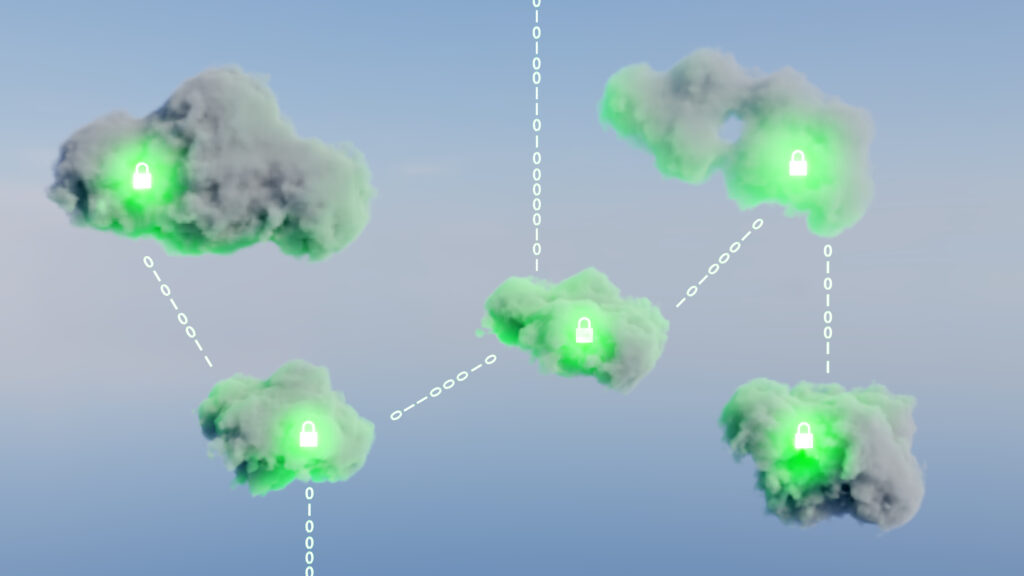If you’re working with Amazon Web Services (AWS), understanding how the AWS route table functions is crucial for managing your cloud network. Route tables in AWS are essential components, especially when dealing with IPv4 or IPv6 CIDR blocks, public and private subnets, VPC endpoints, VPN connections, and more. So, let’s deep dive into AWS route tables and clarify them for you.
What is a Route Table in AWS?
In the AWS ecosystem, a route table is a set of rules, known as routes, that determines where network traffic is directed. Each subnet in your AWS Virtual Private Cloud (VPC) is associated with a route table that controls the traffic flow between subnets. A route table includes details like the Route Table ID and the ID of its associated VPC.
For instance, a VPC route table specifies how packets are routed within your Amazon VPC. Depending on your architecture, you may also work with transit gateways, VPC peering connections, egress-only internet gateways, VPC endpoints, or VPN connections to extend your environment. Including VPC endpoints in your route tables allows you to securely connect private subnets to AWS services without sending traffic over the internet.
What does a Route Table do?
The role of an AWS route table is to direct network traffic based on the destination IP address. Each route in the table specifies a destination (in the form of an IP address or CIDR block) and a target (like an internet gateway (IGW), network interface, or another route table). A local route is a special type of route that enables communication within the VPC.
For example, if you have a subnet with an associated route table that has a route pointing to an internet gateway (IGW), the traffic from that subnet to the internet is allowed. Similarly, traffic from a subnet with a route pointing to a transit gateway is directed to the appropriate network. If you’re building hybrid AWS networking, you might instead configure a route to a VPN Gateway to connect back to an on-premises data center.
Main Route Table vs. Default and Custom Route Tables
By default, AWS creates a main route table for every VPC. Any subnet without an explicit association uses this table. AWS also refers to this initial configuration as the default route table, which always contains a “local” route that allows intra-VPC communication.
You can create custom route tables for more granular control—for example, isolating private subnets from internet traffic, or routing specific subnets through a VPN Gateway to reach on-premises resources.
Gateway Route Tables and Transit Gateways
When using an AWS Transit Gateway, each attachment (VPC, VPN, Direct Connect) can be associated with a gateway route table. These route tables determine which attachments can communicate with each other, creating a hub-and-spoke model for multi-VPC and hybrid connectivity. If you’re scaling beyond a single VPC, understanding gateway route tables is essential.
AWS Route Tables and Security Groups: The Difference
While both route tables and security groups play essential roles in network traffic management, they serve distinct functions. Security groups act as firewalls for EC2 instances, whereas route tables control the routing of network traffic.
It’s also critical to understand the difference between a route table and Network Access Control Lists (NACLs) in AWS. While a route table defines rules for routing network traffic, a NACL is a subnet-level firewall controlling traffic in and out of subnets.
How to Create a Route Table in AWS
Creating a route table in AWS is a straightforward process, which you can complete using the ‘CreateRouteTable’ action. You can either use the default route table that AWS automatically creates for your VPC, or set up a new custom route table. This process can be accomplished via the AWS Management Console, AWS CLI, AWS API, or even with Linux config files.
For custom route tables, you’ll need to specify your VPC ID and possibly some custom rules, then associate it with your desired subnets. Subnet associations play a crucial role in defining the network traffic rules for your AWS EC2 instances. Each route table association determines which subnets follow which routing rules.
AWS Route Table: Key Considerations
When working with AWS route tables, keep these points in mind:
- Association: Each subnet must be associated with a route table, and a subnet can only be associated with one route table at a time.
- Limits: AWS limits the number of route tables you can create per VPC, so it’s essential to plan your architecture correctly.
- Priorities: If there are multiple possible routes, AWS prioritizes routes with the most specific CIDR range.
- Pricing: AWS charges for data transfer through some route table features such as VPC peering connections, NAT gateways, and VPC endpoints.
- Route Propagation: Route propagation enables the automatic propagation of routes from a gateway (like a transit gateway or aws transit gateway) to a route table.
- Hybrid Connectivity: Enterprises often connect their AWS VPCs to on-premises data centers using VPN or Direct Connect. This hybrid approach requires careful planning of route tables and gateway route tables.
How does Tufin fit in?
Tufin simplifies security policy management across complex, multi-vendor environments. With Tufin, you can automate security policies across legacy firewalls and all major cloud platforms including AWS, making it a tangible alternative to traditional manual methods.
Tufin offers an array of solutions for AWS infrastructure management, like AWS security policy orchestration and AWS policy automation. Network Security Automation is an additional advantage over other policy management solutions, such as Algosec & Firemon.
For DevOps teams, Tufin provides automation and guardrails so that infrastructure changes—like updating a gateway route table or creating a route table association—happen safely and with the right permissions in place.
FAQs
What is a route table in AWS?
The default route table (also called the main route table) is created automatically when you build a VPC. It contains a “local” route and applies to any subnet not explicitly associated with another route table. Want to know more about Tufin’s capabilities with AWS? Check out this blog post about Tufin & AWS.
How do VPC endpoints affect route tables?
When you create a VPC endpoint, a route is automatically added to your route table. This allows private subnets to connect securely to AWS services without traversing the internet. Curious about how Tufin enhances AWS functionalities? Read more about Tufin’s enhanced support for AWS support gateway load balancers.
What is a gateway route table?
A gateway route table is used with AWS Transit Gateways to determine how traffic flows between connected VPCs, VPN connections, and Direct Connect links.
How do permissions come into play?
You’ll need the right IAM permissions to create, modify, or delete route tables. This ensures that only authorized admins or DevOps pipelines can manage critical routing rules.
How does DNS relate to route tables?
DNS doesn’t change routes directly, but it determines how hostnames are resolved into IP addresses, which then match against your routing rules. Private Route 53 zones often work hand-in-hand with custom route tables.
Wrapping Up
Managing AWS route tables is foundational for building resilient cloud architectures. From handling VPC endpoints and route table associations to configuring gateway route tables for multi-VPC designs, thoughtful planning ensures security and efficiency.
In today’s world of hybrid AWS networking, most enterprises tie their AWS environments to on-premises networks via VPN or Direct Connect. That makes route tables, and especially the aws transit gateway, central to connectivity strategies.
To learn more about automating AWS policies with Tufin, read this blog post about AWS policy automation with Tufin.
Ready to Learn More
Get a Demo





